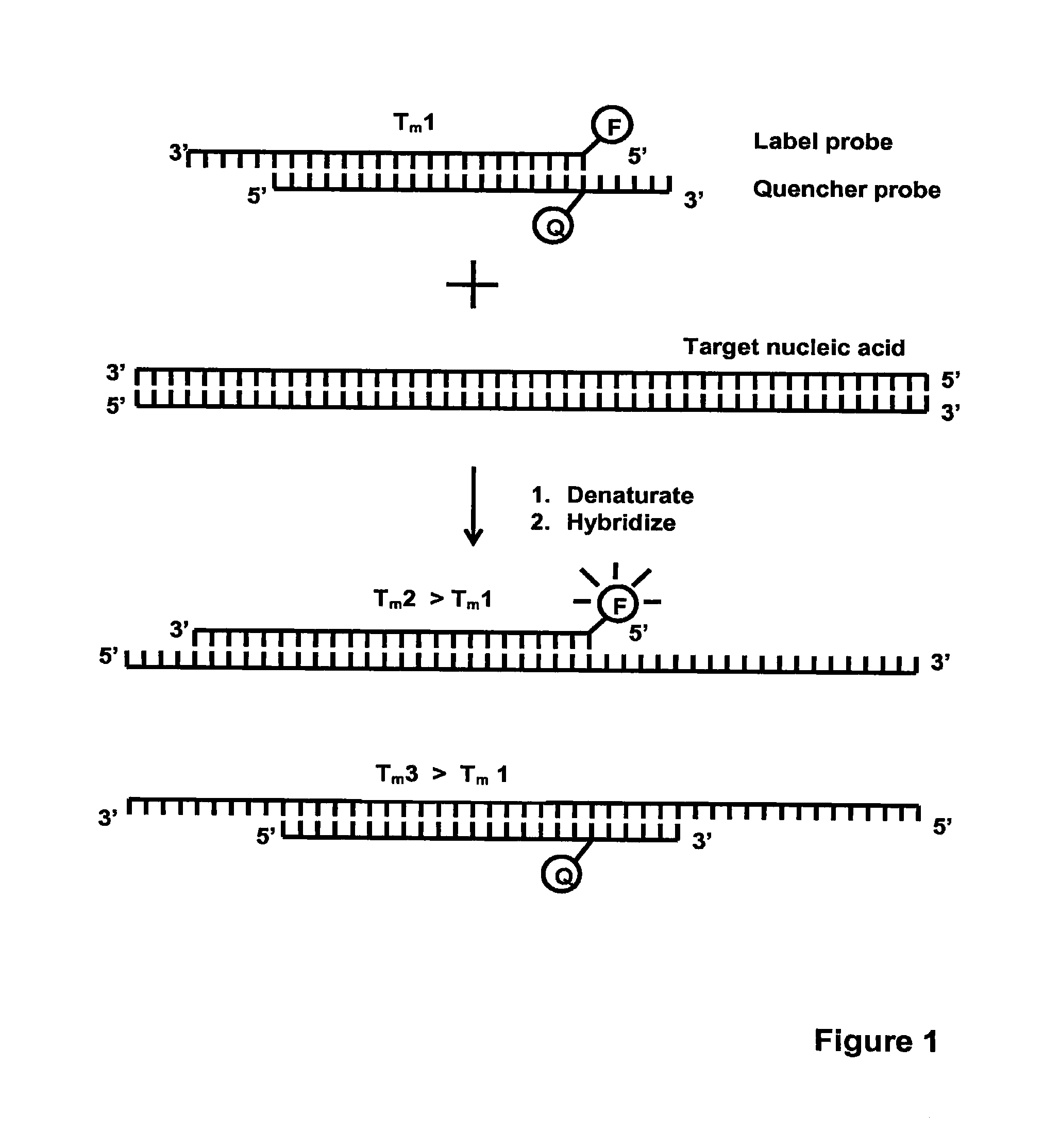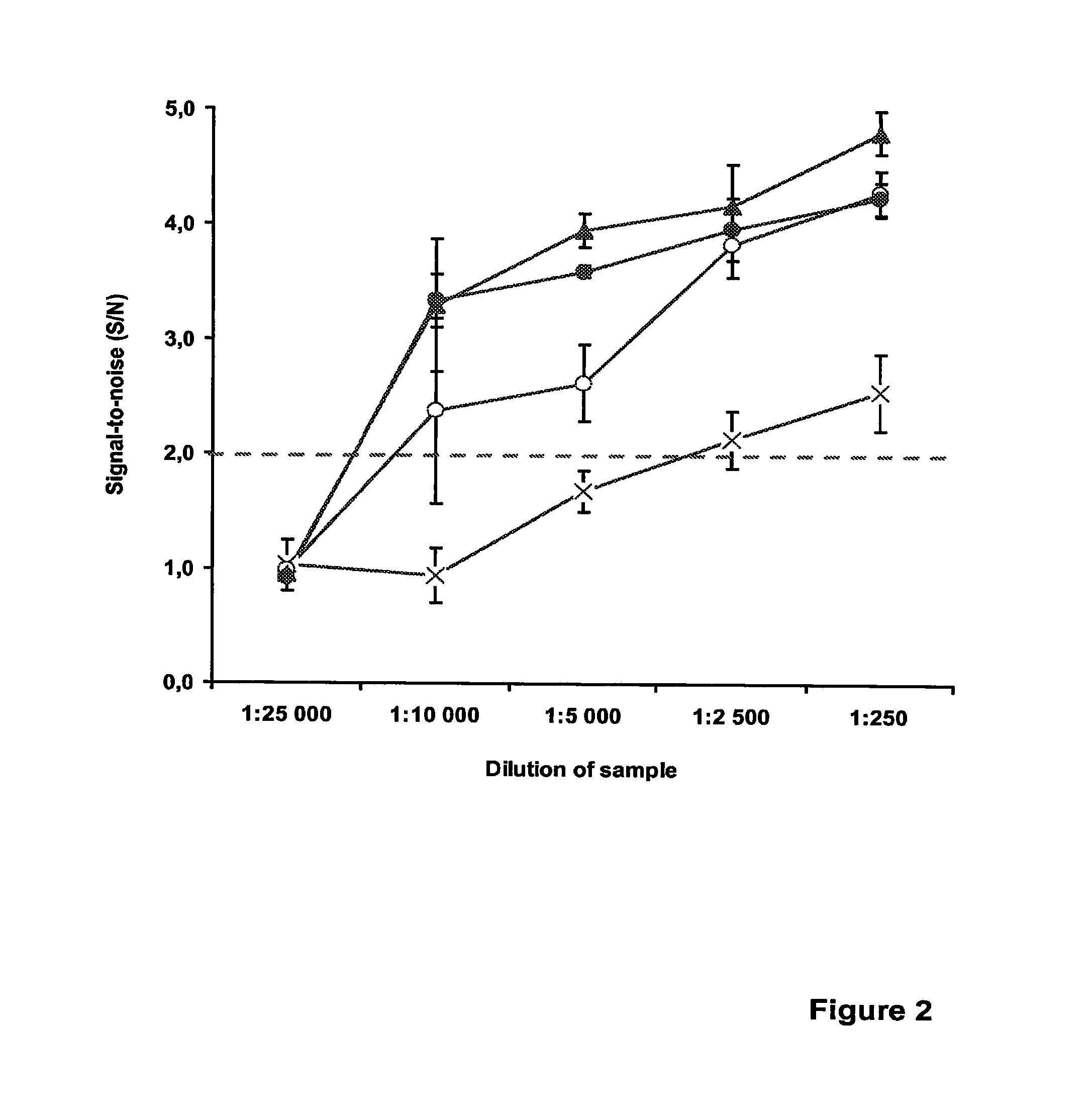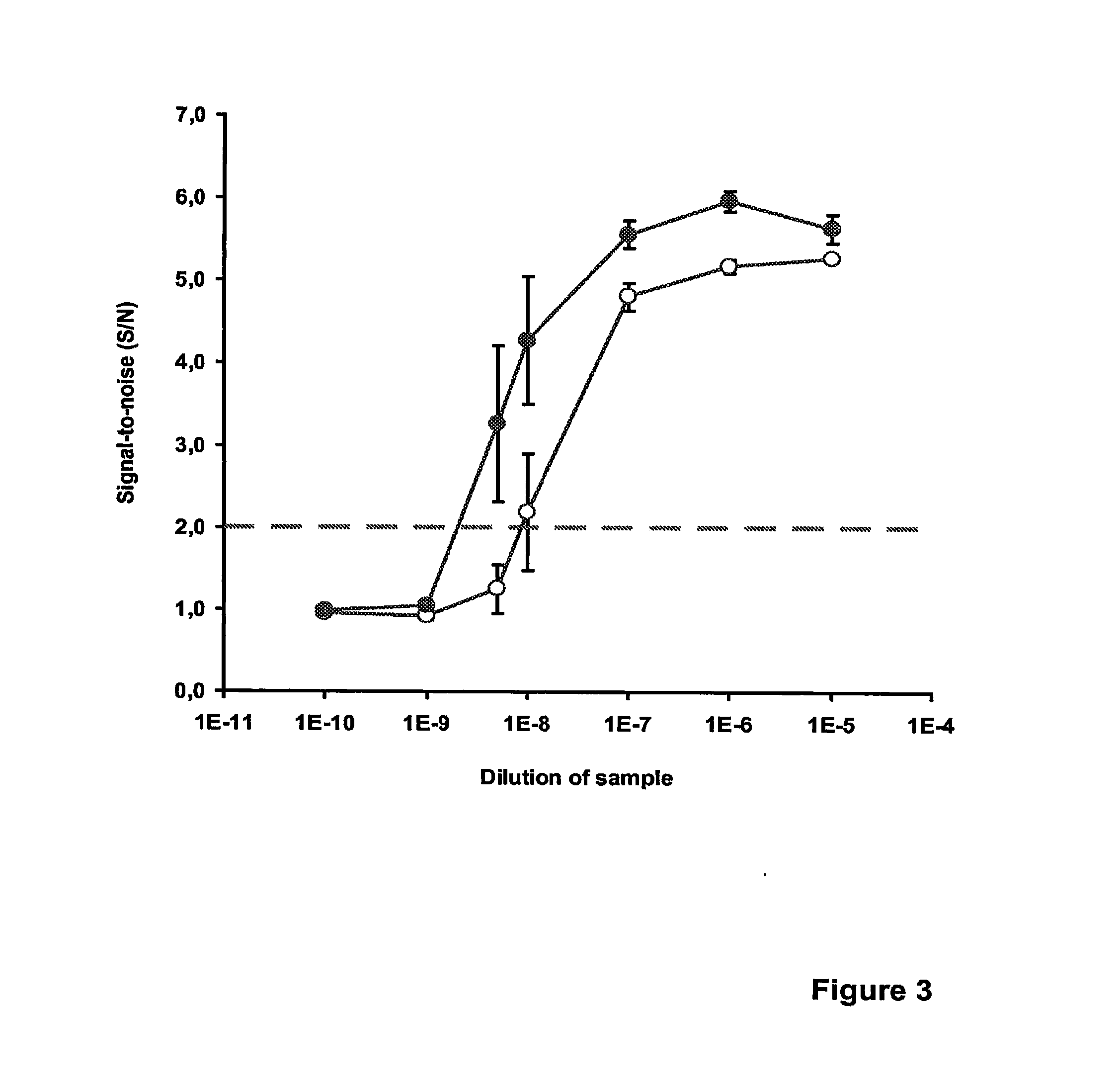Method for detecting nucleic acids
a nucleic acid and competitive technology, applied in the field of homogenous competitive methods for detecting nucleic acids, can solve the problems of oligonucleotide probes susceptible to undesired, methods constitute a serious risk of cross-contamination by amplification products, and the sensitivity of nucleic acid detection is often limited
- Summary
- Abstract
- Description
- Claims
- Application Information
AI Technical Summary
Problems solved by technology
Method used
Image
Examples
example 1
Detection of Neisseria Gonorrhoeae
[0114]This example illustrates the detection of Neisseria gonorrhoeae (N. gonorrhoeae) using four different designs of competitive probes in homogeneous PCR: 1) equal-length complementary probes (e.g. EP 1 339 732); 2) unequal length complementary probes (e.g. EP 0 861 906); 3-4) partially complementary probes with slightly different Tm values (current invention).
[0115]To demonstrate the functionality of the present invention, a qualitative PCR assay for N. gonorrhoeae was established. The Label probe (5′-CGTGAAAGTAGCAGG-CGTATAG-3′; SEQ ID NO: 6) was labelled at the 5′ -terminus with an intrinsically fluorescent terbium chelate described in WO 2008 / 020113. The Quencher probes were labelled with Dabcyl, which is a dark quencher capable of quenching terbium fluorescence when brought in close proximity. Dabcyl was attached at the 3′-terminus of the equal-length (5′-CTATACGCCTGCTACTTTCACG-3′; SEQ ID NO: 7) and unequal length (5′-GCCTGCTACTTTCACG-3′; SE...
example 2
Detection of Chlamydia Trachomatis
[0120]This example illustrates the detection of Chlamydia trachomatis using unequal length complementary probes and partially complementary probes in a qualitative homogeneous end-point PCR. In order to further demonstrate that increasing the Tm of the Quencher probe-target duplex has as a positive effect on the detection sensitivity, another set of probe pairs were designed that were specific for the cryptic plasmid of C. trachomatis. An assay setup similar to Example 1 was employed, now concentrating on the two main probe design alternatives, i.e., the unequal length complementary probes (e.g., EP 0 861 906) and the partially complementary probes of the current invention. To study the effect of introducing a mismatch in the single-stranded segment of the Quencher probe, the internal quencher moiety (Dabcyl-dT) was positioned at an exactly opposite base of the label moiety on the other probe, resulting in a mid-sequence T-T mismatch (original bas...
example 3
Homogenous Real-Time Monitoring of Methicillin-Resistant Staphylococcus Aureus
[0124]This example illustrates homogeneous real-time monitoring of the accumulation of methicillin-resistant Staphylococcus aureus (MRSA)-specific DNA in homogeneous PCR using unequal-length complementary probes and the partially complementary probes of the current invention. To demonstrate that the present invention allows more sensitive detection of target nucleic acids also in terms of an earlier threshold cycle (Ct) in real-time PCR applications, we established an assay for MRSA applying the same basic principles than in the previous experiments. However, the real-time measurement was performed as a single measurement step at 40° C. after every second PCR cycle. Fluorescence recording was started after the 11th PCR cycle. The nucleotide sequence of the Label probe was 5′-AAGGAATAGTGTAGATTACGTTAGACCTT-3′ (SEQ ID NO: 14), that of the unequal-length complementary Quencher probe was 5′-AACGTAATCTACACT-ATT...
PUM
| Property | Measurement | Unit |
|---|---|---|
| Tm | aaaaa | aaaaa |
| Tm | aaaaa | aaaaa |
| diameter | aaaaa | aaaaa |
Abstract
Description
Claims
Application Information
 Login to View More
Login to View More - R&D
- Intellectual Property
- Life Sciences
- Materials
- Tech Scout
- Unparalleled Data Quality
- Higher Quality Content
- 60% Fewer Hallucinations
Browse by: Latest US Patents, China's latest patents, Technical Efficacy Thesaurus, Application Domain, Technology Topic, Popular Technical Reports.
© 2025 PatSnap. All rights reserved.Legal|Privacy policy|Modern Slavery Act Transparency Statement|Sitemap|About US| Contact US: help@patsnap.com



